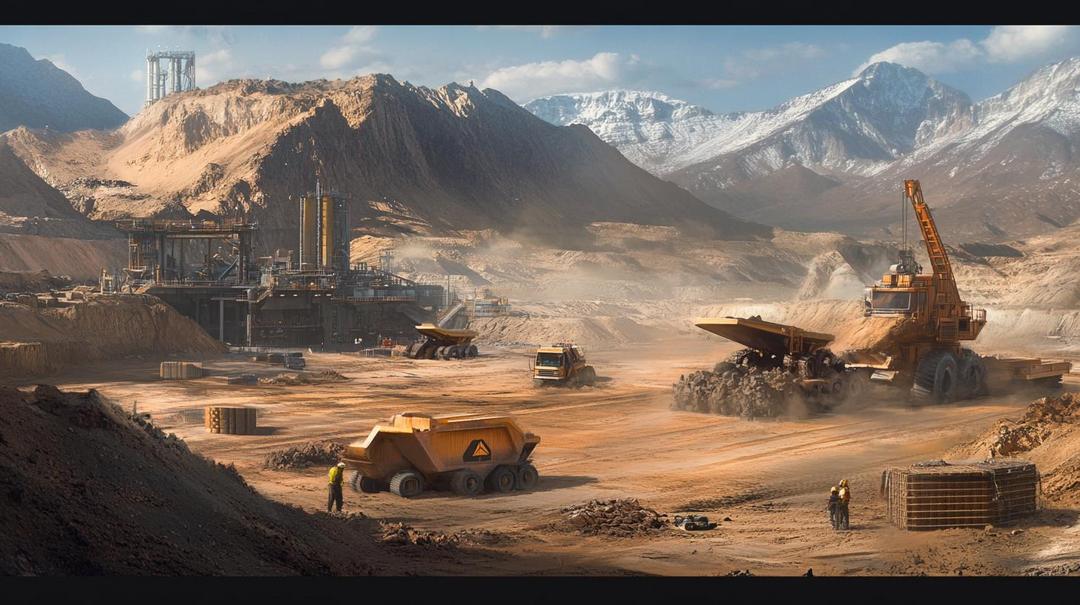Rare earth bottlenecks in U.S. supply chains pose serious risks to national security, economic stability, and technological innovation. As global demand rises and geopolitical tensions grow, is the U.S. at the brink of a rare earth crisis?
The extreme reliance on foreign resources puts the U.S. at a disadvantage. What are the key risks in the rare earth supply chain, the underlying economic and political factors, and potential solutions—including domestic mining, recycling, and material alternatives?
Let’s dive in.
What's Inside
What Are the Rare Earth Bottlenecks in U.S. Supply Chains?
Supply chain bottlenecks for rare earth elements represent a critical vulnerability in U.S. industrial capabilities. These strategic materials are essential components in advanced technologies across multiple sectors, including defense, electronics, renewable energy, and transportation.
Understanding Supply Chain Vulnerabilities
The United States currently imports over 80% of its rare earth elements, with China dominating the global supply chain. This extreme dependency creates significant economic and national security risks. Historical disruptions have demonstrated how quickly geopolitical tensions can compromise access to these critical materials.
Past supply chain failures have highlighted the fragility of rare earth element procurement. For instance, during the 2010 China-Japan territorial dispute (opens in a new tab), China effectively halted rare earth exports, causing massive market disruptions and price spikes across multiple industries.
Geopolitical Risks: How China Controls the Rare Earth Supply Chain
China’s strategic control of rare earth elements is overwhelming. The country controls over 60% of global rare earth mining and an astounding 85% of processing capabilities. This monopolistic position allows China to weaponize rare earth exports as a geopolitical bargaining tool.
Trade Policy and International Tensions
Recent trade policies have further complicated rare earth access. China has periodically implemented export restrictions, directly impacting global supply chains. The ongoing U.S.-China trade tensions have created additional uncertainty, with potential export limits serving as a constant background threat to U.S. technological industries.
Economic Pressures: Supply, Demand, and Price Volatility
Global demand for rare earth elements is surging, driven by emerging technologies like electric vehicles, wind turbines, and advanced semiconductors. This increasing demand, combined with limited domestic production, creates significant economic pressure.
Market Dynamics
U.S. rare earth mining faces substantial challenges, including high operational costs and complex regulatory environments. Price fluctuations are common, with supply constraints often triggering dramatic market shifts. Foreign investment risks compound these challenges, leaving U.S. industries vulnerable to external market manipulations.
Domestic Production Challenges: Can the U.S. Mine Its Own Rare Earths?
Current U.S. rare earth mining operations are limited, with sites like Mountain Pass in California representing rare domestic capabilities. Environmental regulations, public opposition, and significant processing limitations continue to impede domestic production efforts.
Government and Industry Responses
Recent U.S. government initiatives have attempted to boost domestic rare earth production through targeted funding and policy support. However, substantial infrastructure and technological investments remain necessary to establish a robust, independent rare earth supply chain.
Alternative Solutions: Can Recycling and Substitutes Ease Supply Risks?
Innovative approaches are emerging to address rare earth supply vulnerabilities. Rare earth recycling, particularly from electronic waste, presents a promising avenue for reducing external dependencies.
Technological and Strategic Alternatives
Researchers are developing non-rare earth magnets and exploring synthetic substitutes. International partnerships with allies like Australia, Canada, and European Union nations offer potential collaborative solutions. Technological innovations in electric motors and semiconductor materials continue to expand alternative material options.
Conclusion
The U.S. cannot afford continued dependency on foreign rare earth suppliers, particularly as global demand increases and geopolitical uncertainties remain high. Investing in domestic rare earth mining, refining infrastructure, and alternative materials is crucial to reducing supply chain risks.
FAQs
Why are rare earth elements important for U.S. supply chains?
Rare earth elements are essential for manufacturing aerospace components, electric vehicle batteries, semiconductors, and renewable energy technologies.
How dependent is the U.S. on China for rare earth elements?
The U.S. imports over 80% of its rare earths from China, making it highly vulnerable to supply disruptions and trade restrictions.
What efforts is the U.S. making to secure a domestic rare earth supply?
The U.S. government has invested in rare earth mining, refining facilities, and recycling initiatives to reduce its reliance on China.
Are there viable alternatives to rare earth elements?
Researchers are developing alternative materials, such as ferrite magnets and synthetic substitutes, although widespread adoption is still in progress.
How do geopolitical tensions impact rare earth supply chains?
China’s control over rare earth refining allows it to impose export restrictions in response to trade disputes, creating risks for global supply chains.


Dustin
Driven by a fascination with rare earth elements and their role in powering modern tech and engineering marvels. A true car and tech enthusiast, he loves exploring how these hidden heroes fuel our most exciting innovations.
You Might Also Like…